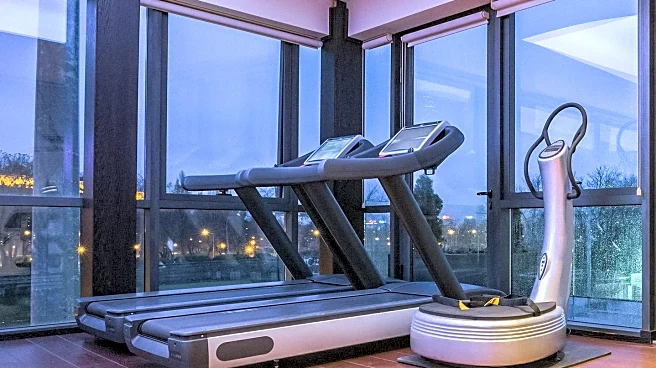What's Happening?
Power walking, a form of brisk walking, is gaining attention as a beneficial cardiovascular exercise. Jojo Kelly, an ACE-Certified Personal Trainer, emphasizes its advantages for heart health and endurance. Power walking involves faster strides and arm swings, making it a moderate-intensity workout. According to the CDC, it should allow for conversation but not singing. Studies have shown that brisk walking can lower blood pressure and improve mood. Kelly suggests power walking for beginners, older adults, and those seeking low-impact exercise. It is also beneficial for cyclists and runners to build mileage without stress. Kelly provides structured workouts, including interval-based, heart rate zone, and distance-based power walks, each designed to enhance cardiovascular function and endurance.
Why It's Important?
Power walking offers a low-impact alternative to high-intensity workouts, making it accessible to a wide range of individuals, including those new to fitness or with physical limitations. It supports cardiovascular health by conditioning the heart and improving blood circulation. The exercise is particularly valuable for managing hypertension and enhancing mood, as supported by research. By incorporating power walking into their routines, individuals can achieve recommended aerobic exercise levels, promoting overall health and longevity. This form of exercise is also adaptable, allowing for progression as fitness levels improve, making it a sustainable option for long-term health maintenance.
What's Next?
Individuals interested in power walking can start with Kelly's recommended workouts, gradually increasing intensity and frequency as their fitness improves. Monitoring recovery and adjusting efforts accordingly will be crucial for progression. As power walking gains popularity, fitness trainers may develop more structured programs and classes, potentially integrating technology for tracking progress. The CDC's guidelines for aerobic exercise may encourage more people to adopt power walking as a regular activity, contributing to public health improvements.
Beyond the Headlines
Power walking's rise highlights a shift towards more inclusive and accessible fitness options. It challenges the notion that effective workouts must be high-impact or require expensive equipment. This trend may influence the fitness industry to focus more on sustainable and adaptable exercise programs. Additionally, the emphasis on cardiovascular health through power walking aligns with broader public health initiatives aimed at reducing heart disease and promoting active lifestyles.










